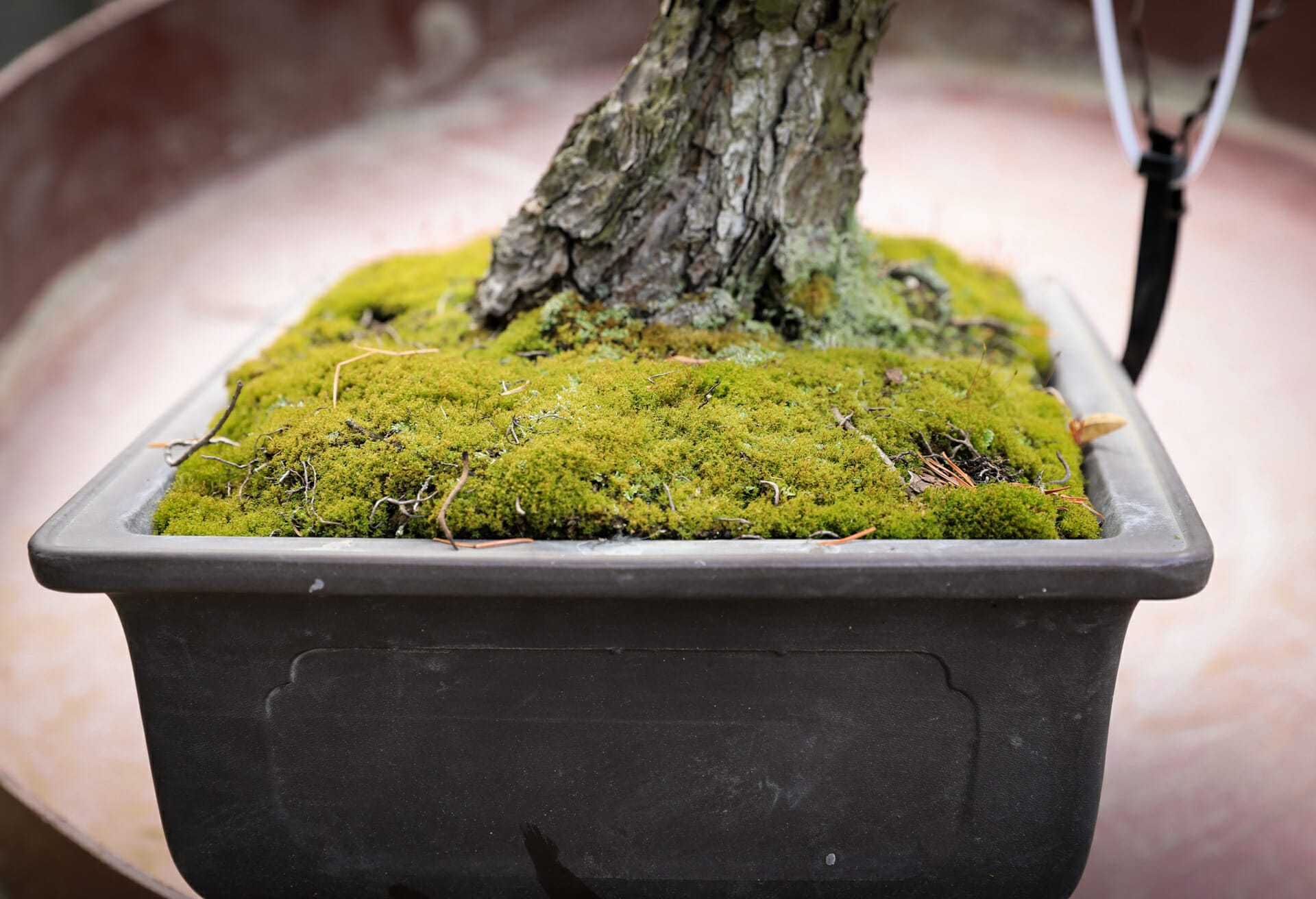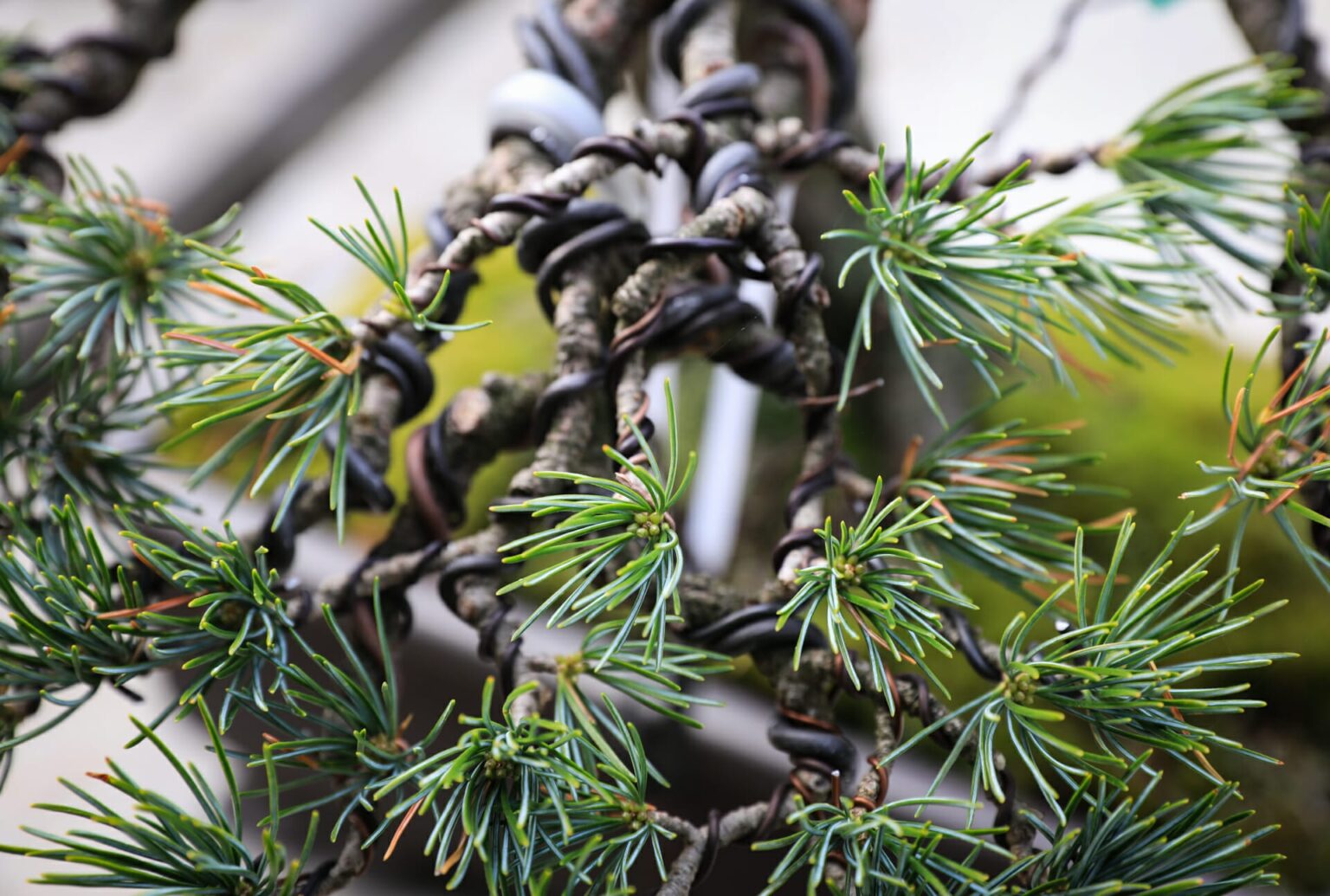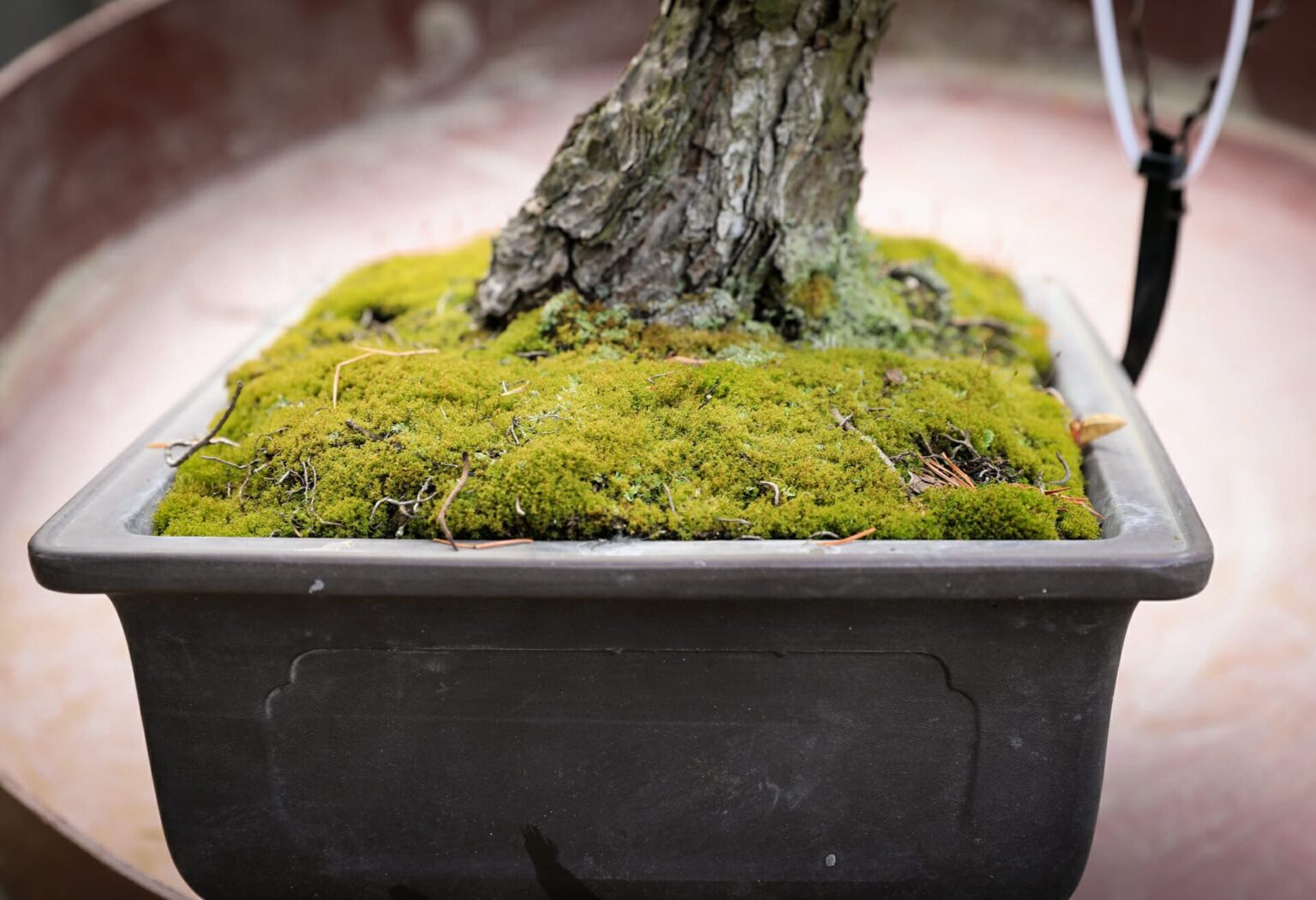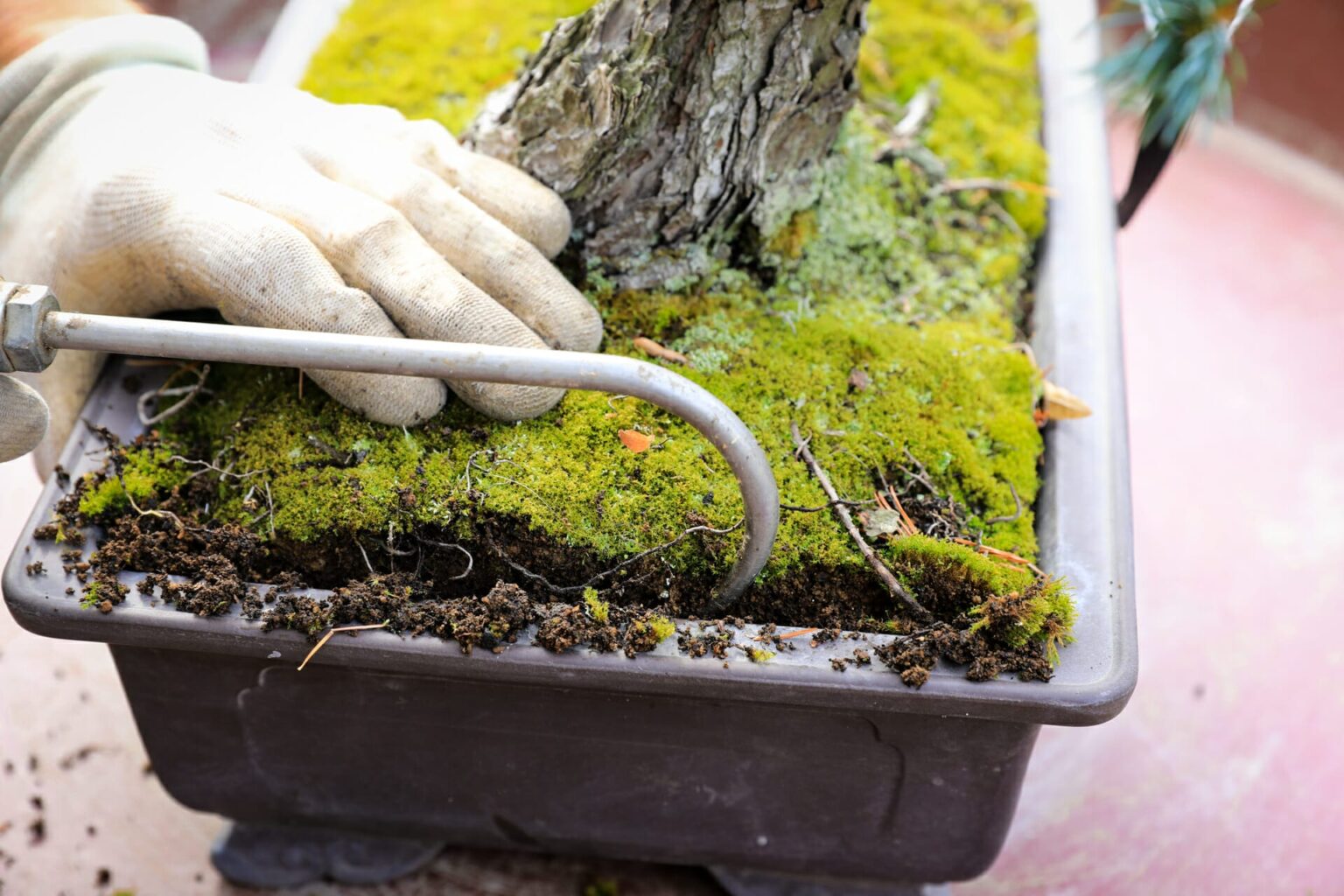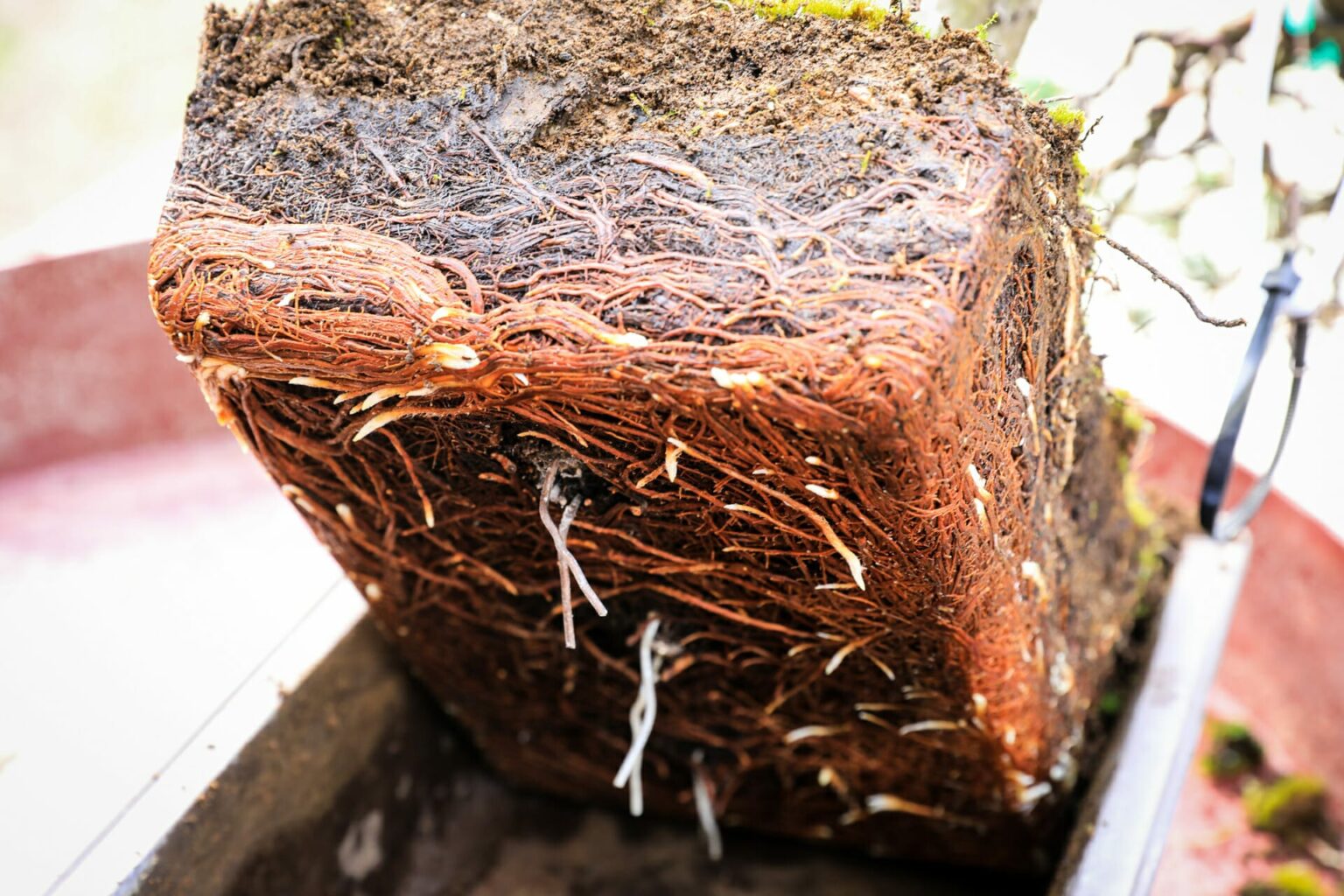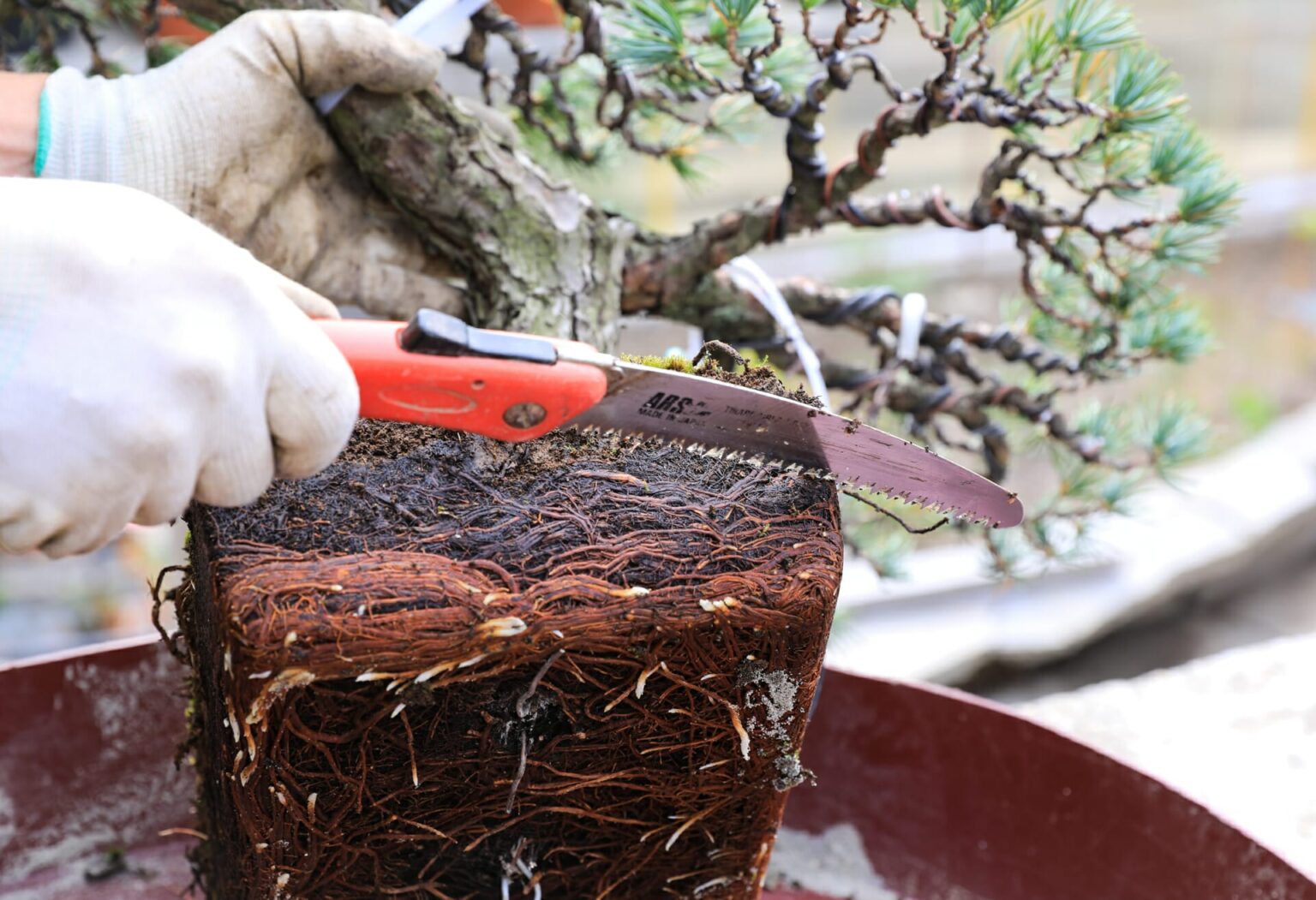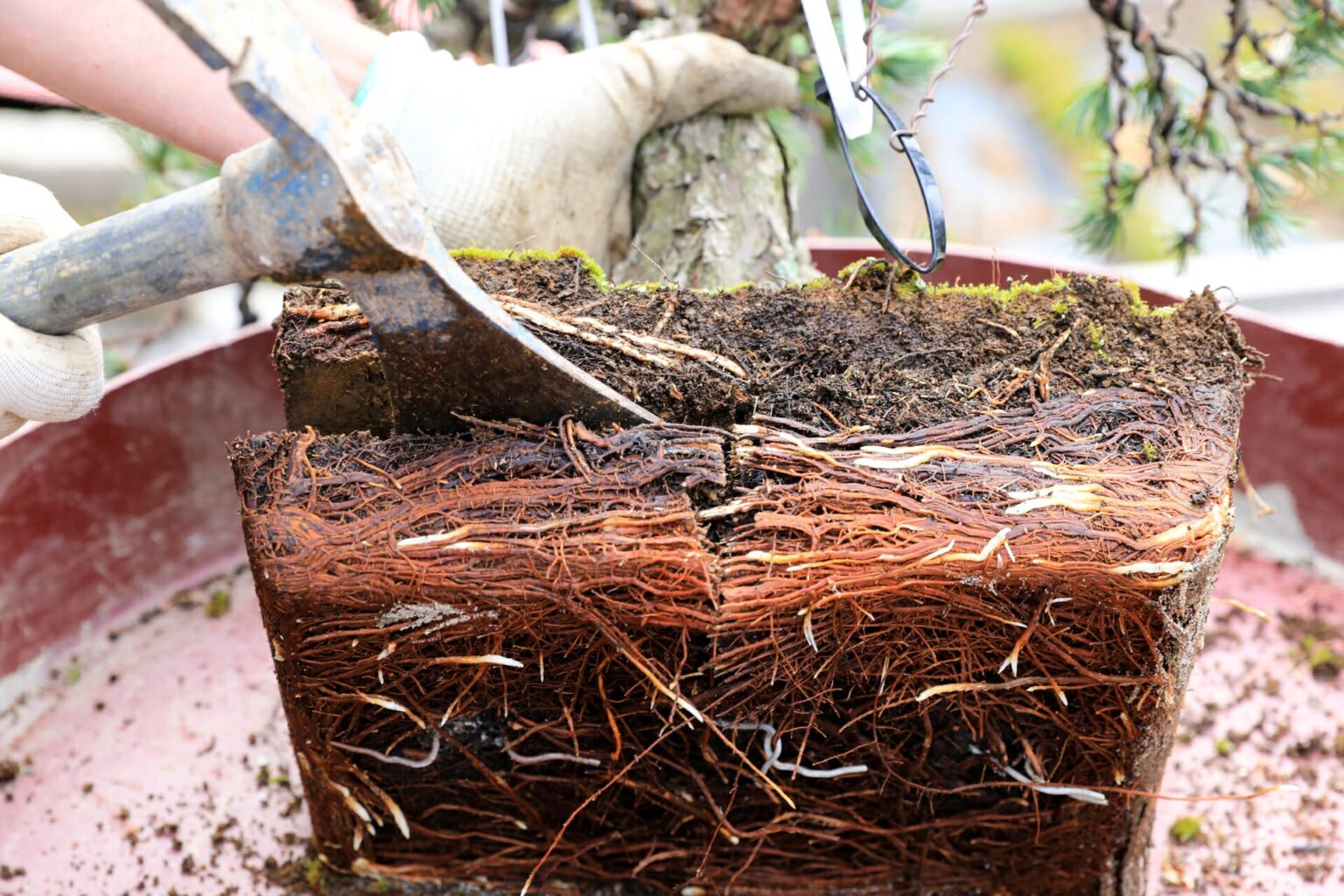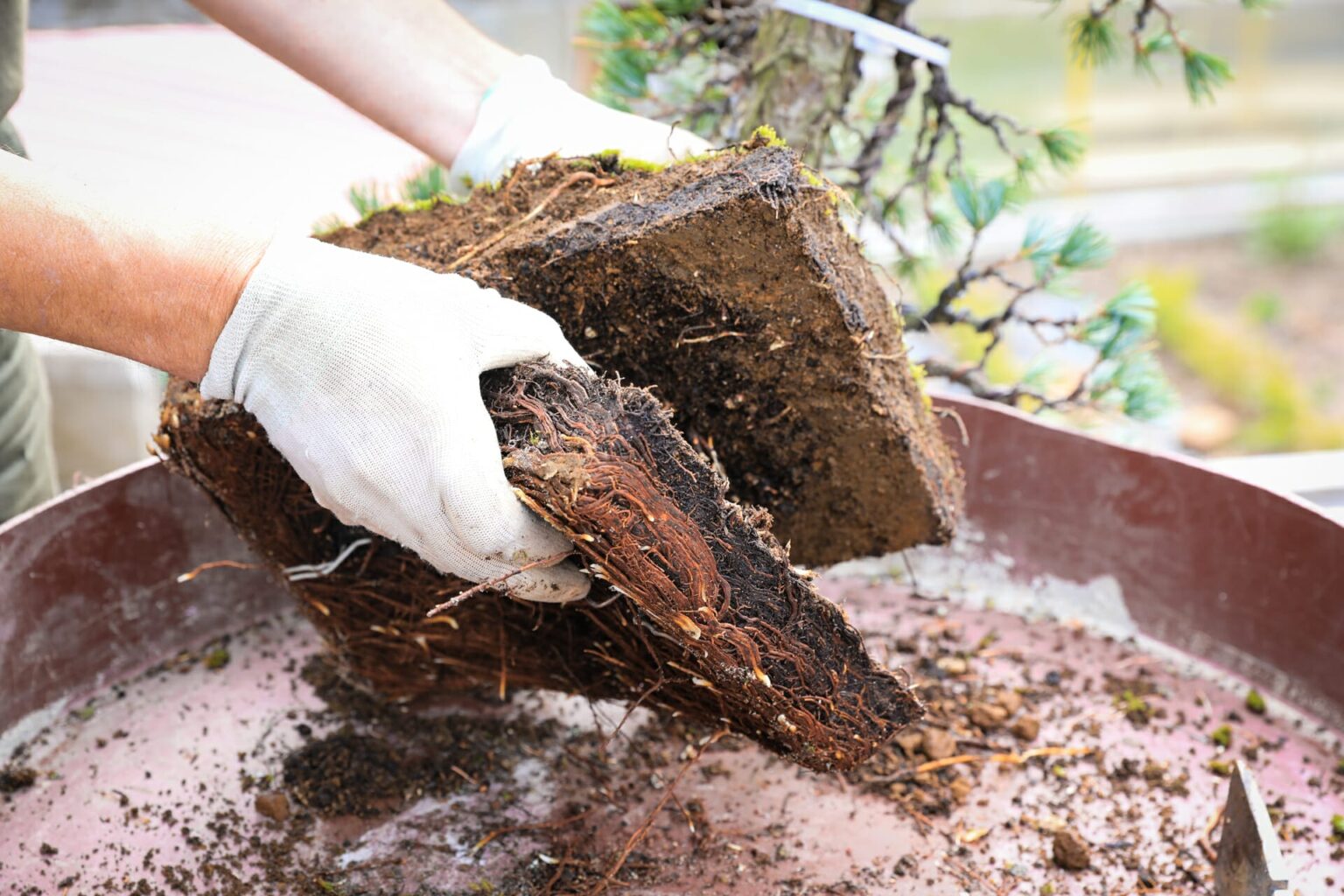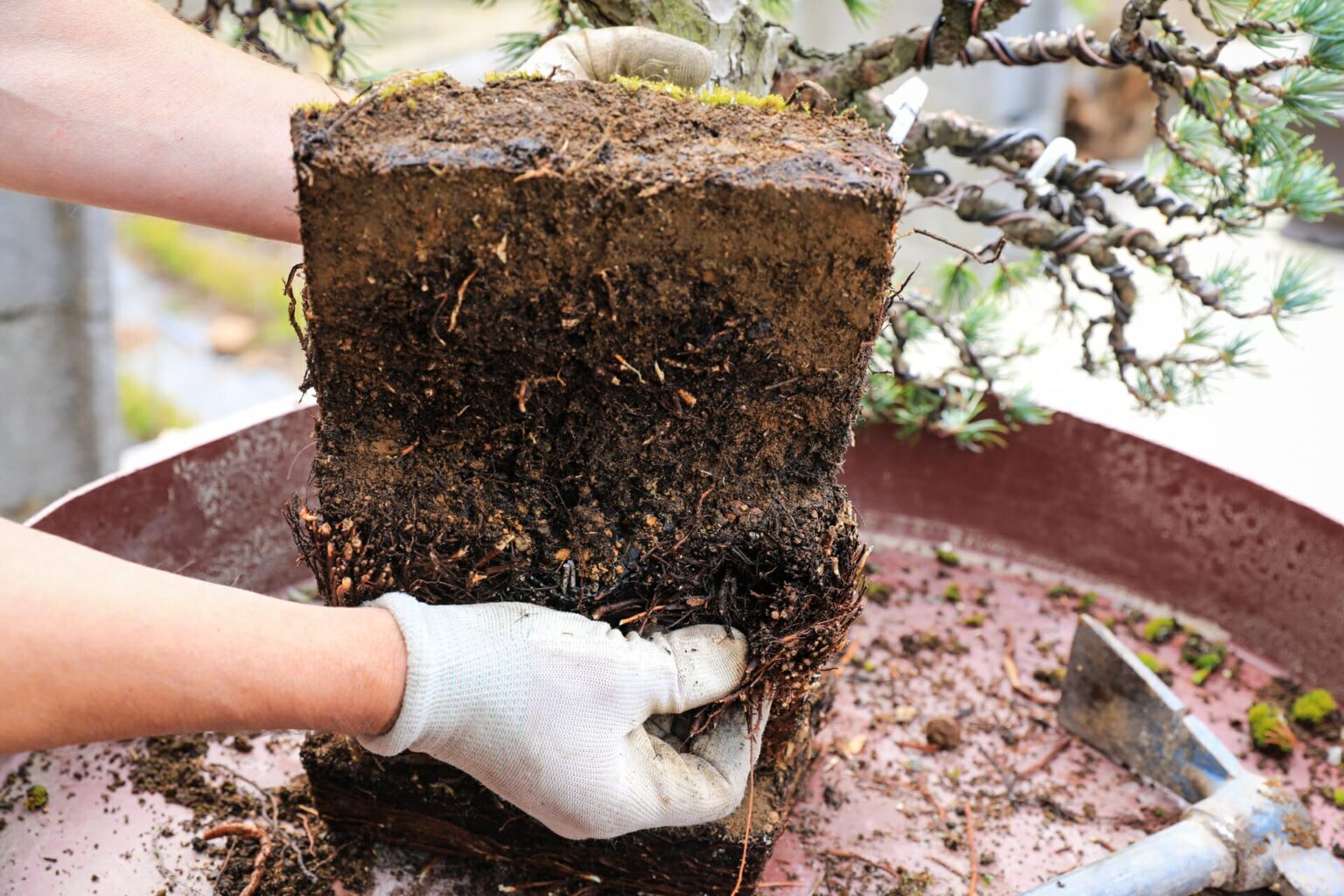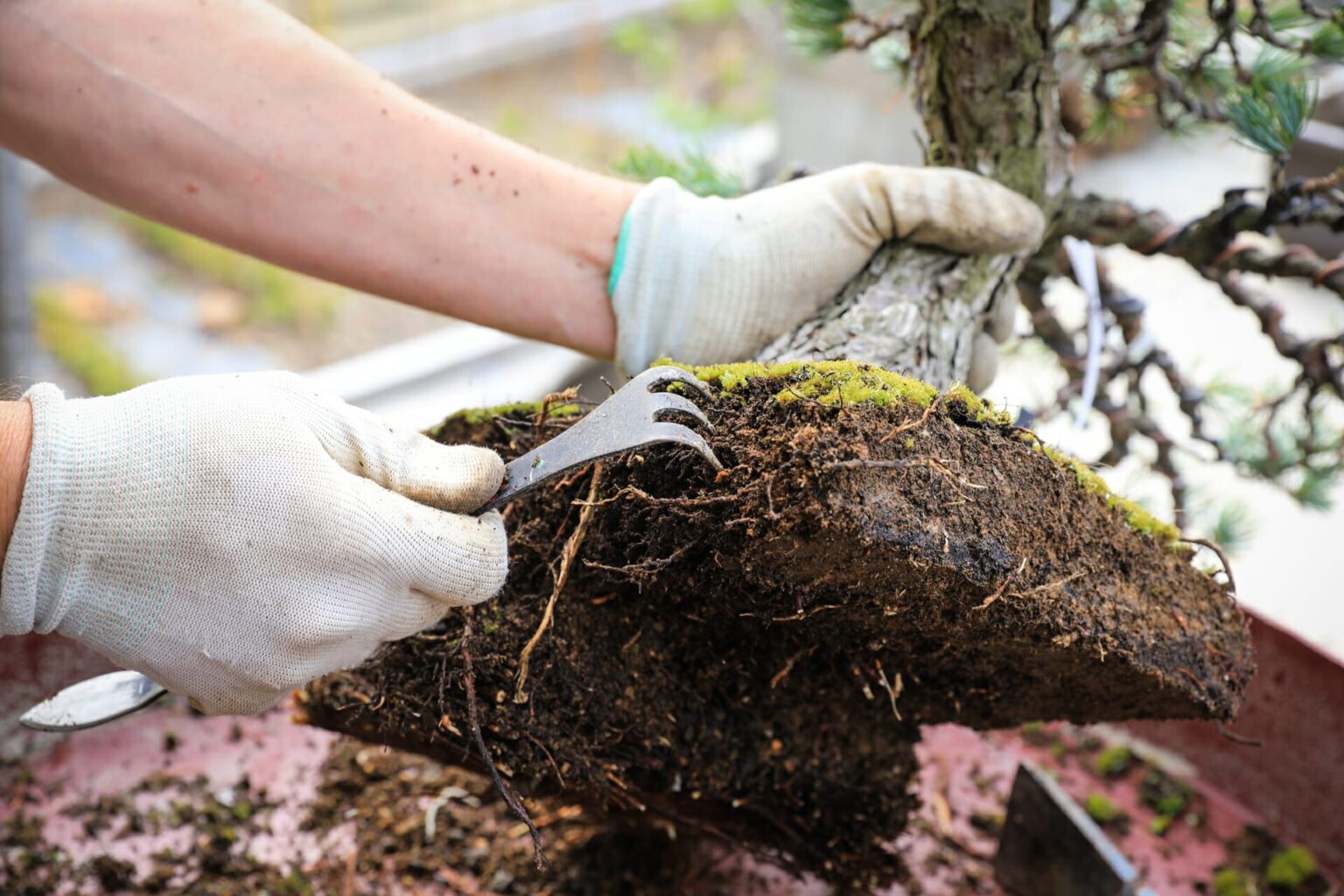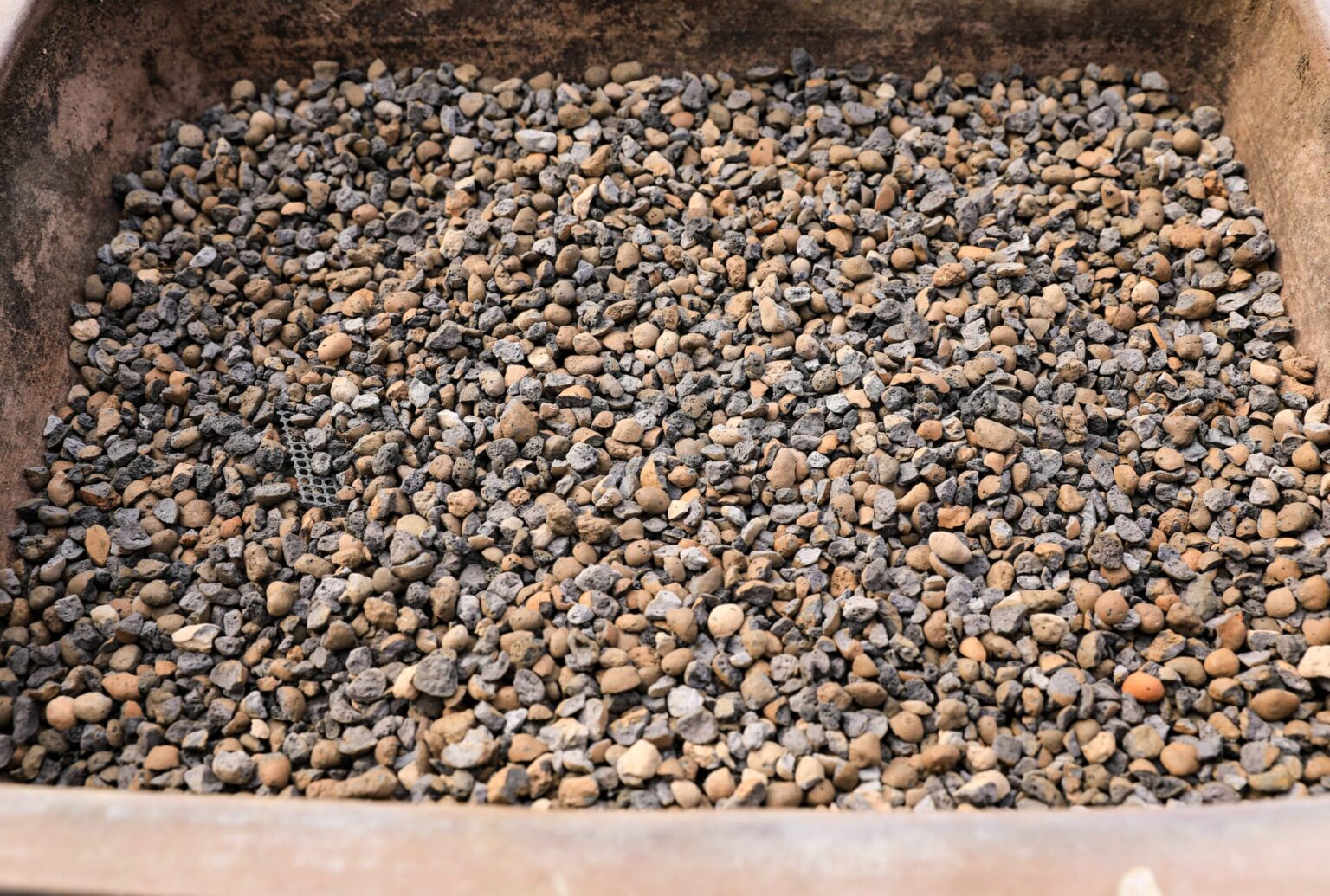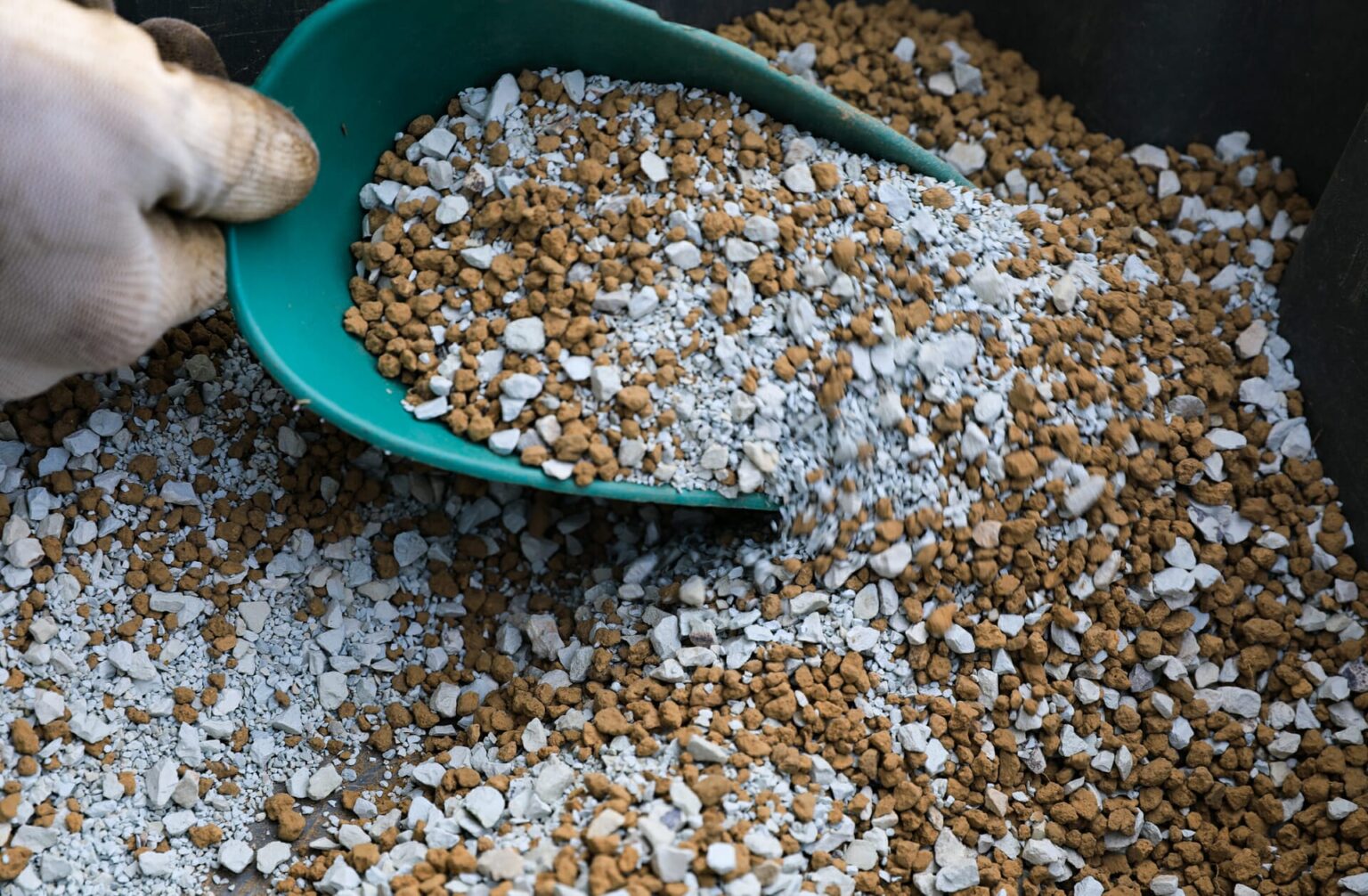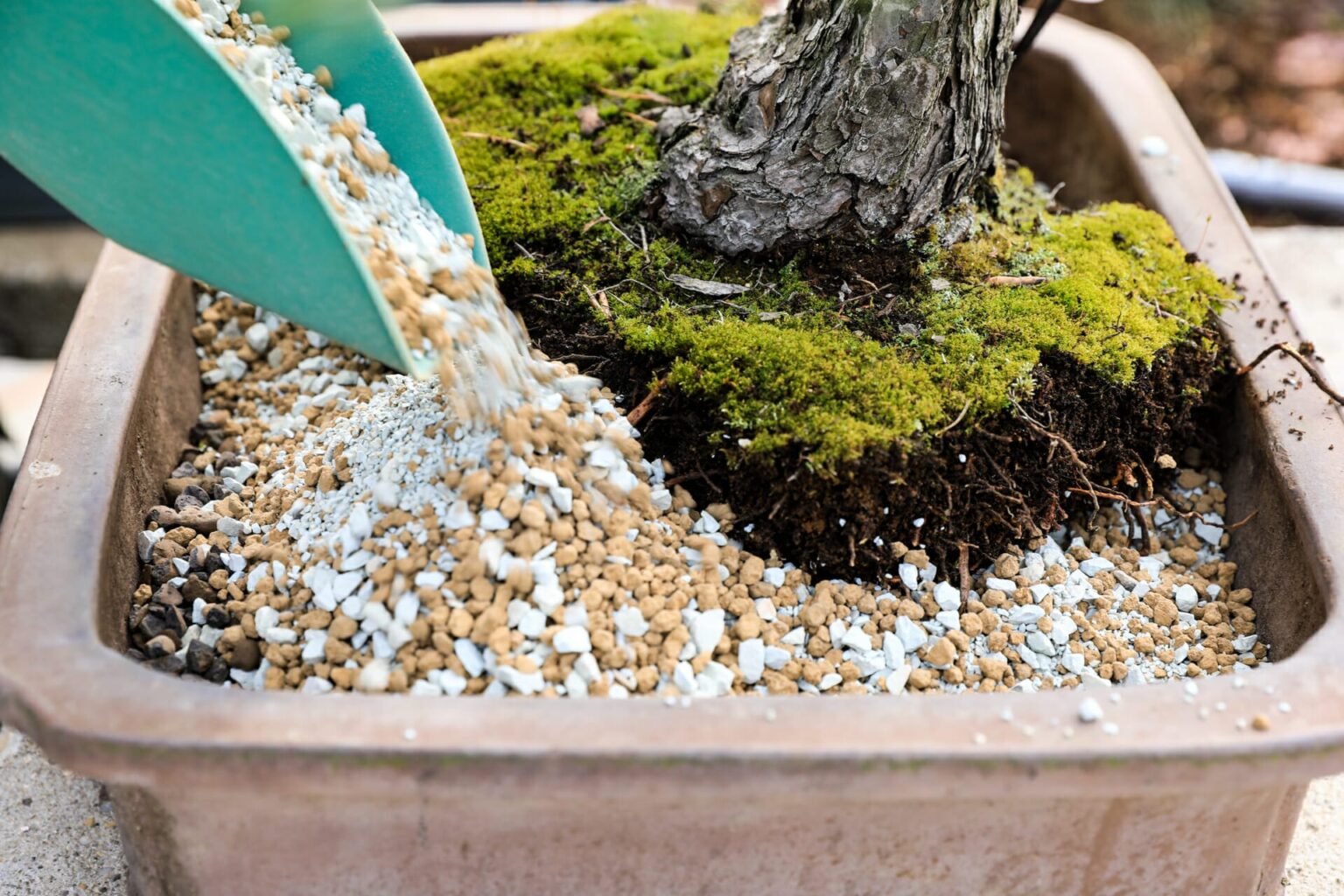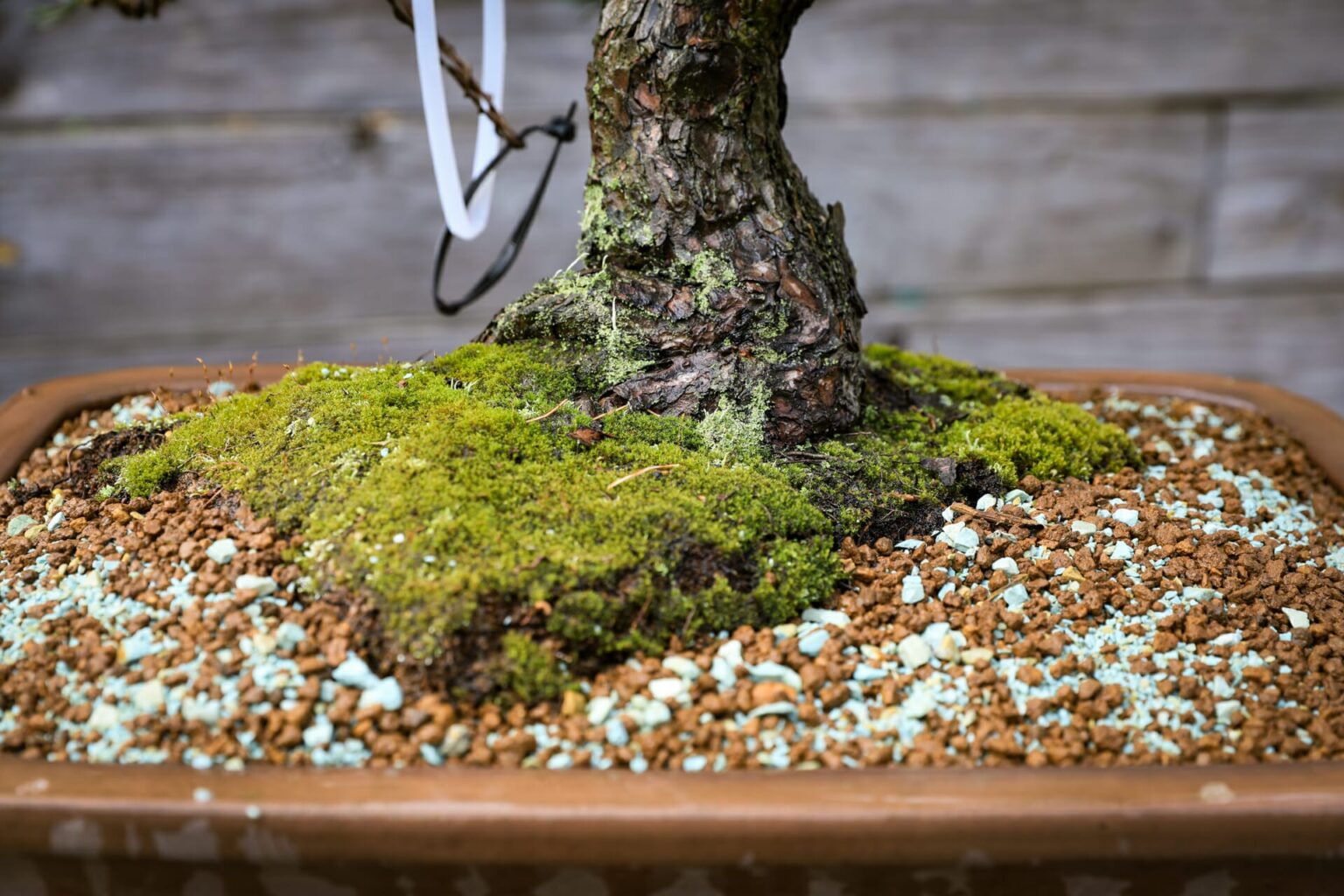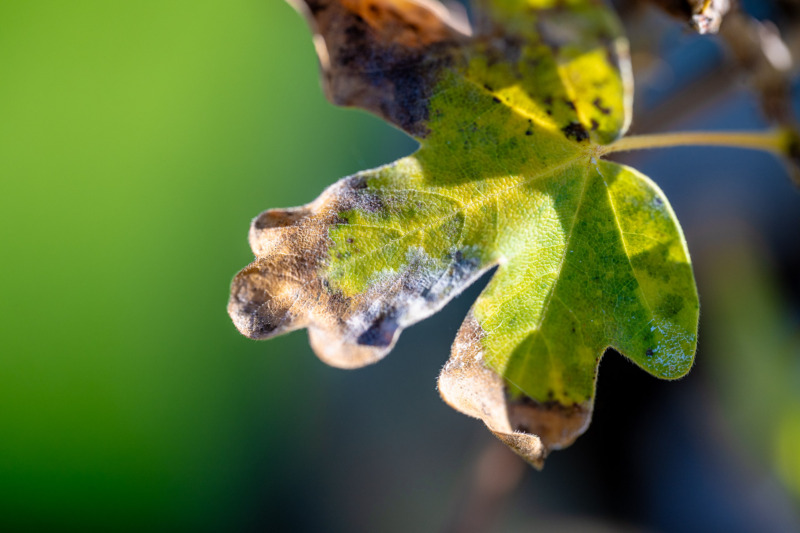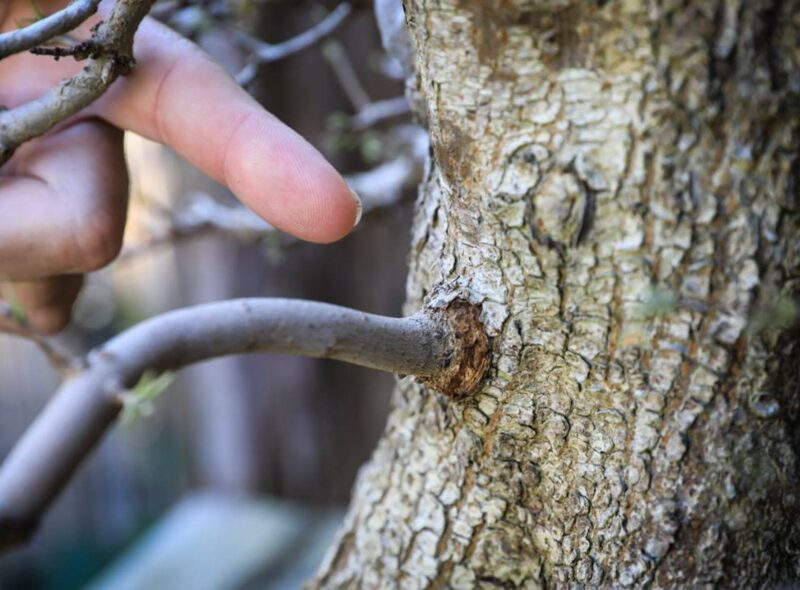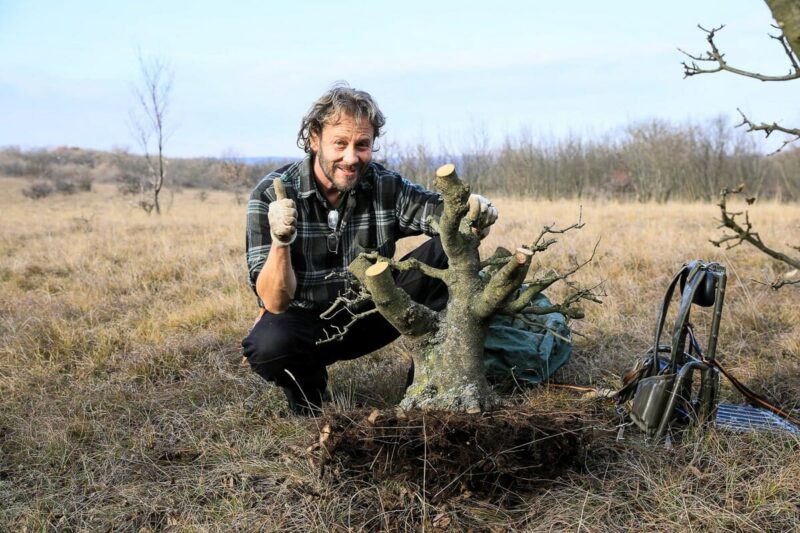The ideal repotting interval for deciduous trees is around two to four years, while intervals of five to ten years are ideal for conifers. With conifers in particular, repotting intervals of more than ten years can result in the root ball becoming so firmly entrenched that it can no longer be loosened by washing or scraping it out. This is the wrong way to go about it, as removing too much soil and root system can be fatal for the bonsai. If this is the case, only half the root ball should be worked on and loosened. The other half should be left untreated as a kind of safeguard. In this way, the treated half can regenerate, while the untreated side can absorb sufficient nutrients and water for the tree from the soil. After one to two years and when the tree has developed into a strong specimen, the second side can then also be worked on without hesitation. It is good for every bonsai if it is given a larger habitat with loose substrates (e.g. Akadama, pumice, zeolite or Kiryu) during this repotting phase. After a recovery phase of two to three years, the tree can then be planted back into a suitable pot without any problems.

